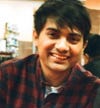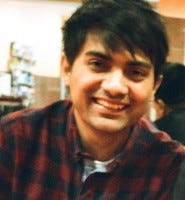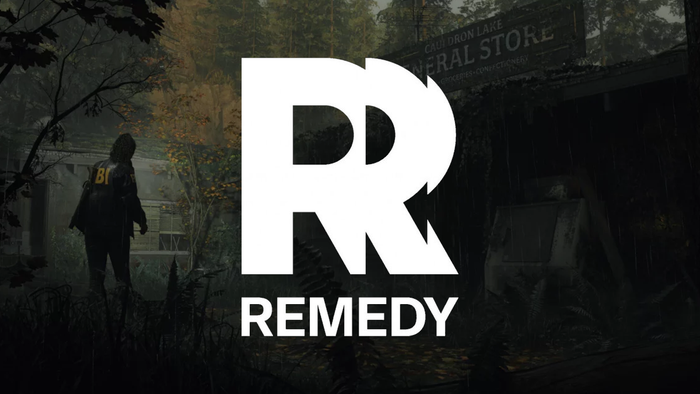Enabling narrative intentionality - a design analysis of 1979 Revolution: Black Friday
This post analyses the game design of "1979 Revolution: Black Friday" through the lenses of mechanical/fictional design and narrative intentionality, in order to understand what makes the game such a compelling narrative experience.

1979 Revolution: Black Friday is one of the best narrative games I've played in recent times. In looking closely at its game design, my goal is to understand what makes it a compelling narrative experience. The game is set during the Iranian Revolution. In the opening sequence, we are informed that the game is based on real life stories, an assertion that is fleshed out through extensive use of archival media like photographs, audio and video tapes in the game. Players can control Reza Shirazi - a young Iranian who has just returned home from Germany – to find the country undergoing a revolution against the dictator – the Shah. Initially, Reza is fascinated by the revolution but not committed to it. A passion for photography leads him to document the revolution as a neutral observer, or so he insists. Much to Reza's consternation, in the murky world of ongoing revolution, instead of being devoid of politics, photography ends up being a tool of political manipulation in the hands of his enemies and friends alike. Reza's experience of the revolution is closely shaped by his interaction with NPCs - friends, and family - Babak (house servant and childhood friend), cousin Ali (committed revolutionary leaning towards violence), Hossein (older brother, working in SAVAK - the Shah's secret police); leaders of the revolution - Bibi and Abbas; and nemesis - Asadollah Lajevardi (a historical figure). The core game mechanic is built upon dialogue choice template with a few quick time events (QTE) thrown in, like the design of recent TellTale games. In hands of less talented narrative designers, the limitations of game mechanics and environment (not to mention the lackluster visuals) would have led to an underwhelming game experience. That 1979 avoids this pitfall is a testament to the effectiveness of its sophisticated narrative design. Let's delve deeper. In my analysis of the game’s design, I'll make extensive use of two analytical frames - mechanical and fictional aspects of game design, and, narrative intentionality. I picked up the first frame from Jurie Horneman's 2015 GDC talk "The Design in Narrative Design". The frame narrative intentionality is borrowed from Steve Lee’s 2017 GDC talk "An Approach to Holistic Level Design".
Mechanical and fictional design
Following Jurie Horneman's exposition of the terms, by the mechanical aspect of design I mean the abstract rules of game elements. Mechanical aspect is purely functional, it is concerned with the how, not the why. Whereas the fictional aspect is concerned with what the design rule means in the context of the game, or as Jurie says: "what we are asking the player to believe when we are talking about suspension of disbelief". The important point to remember is that mechanical and fictional aspects are not two different things in themselves, they are just different ways of looking at the same design element. The key to the successful design of an element is balancing the two aspects in such a way that the fictional aspect convincingly situates the mechanical aspect in the game world.
Let's take the example of the audio log. This mechanic has been extensively used in games like System Shock 2, Bioshock, Batman: Arkham Asylum and Dishonoured. It's a tried and tested mechanic and very effective at delivering story chunks relatively easily. The mechanic is generally simple - the player needs to collect the logs to recover the embedded story. But in some cases (Bioshock Infinite for example) its use feels a bit forced since the mechanical aspect is not always meaningfully connected to the game's world. 1979 Revolution’s use of the mechanic feels natural because the fictional aspect (the why) is well grounded in the game's world. At the beginning of the game, Babak tells Reza that cassettes smuggled from France are delivering ayatollah Khomeini’s message of resistance against the Shah to the people. In fact, cassettes did play an important role is disseminating exiled Khomeini's sermons to Iranian public during the revolution, a historical detail that the game's designers make good use of. By making an NPC (Babak) explain the importance of the cassettes at the beginning of the game, the designers introduce the mechanic in a natural way (instead of through UI instructions) and meaningfully relate it to the game's world.
1979 Revolution uses different mechanics for different aspects of narrative and level design:
for world building - snap photos, audio logs, video logs and letters
for plot advancement - navigation, QRE actions and dialogue
for character development – dialogue and character animation
Let’s take a closer look at each of them.
World building
By casting the player character Reza as a photographer ( the fictional aspect of the design) the mechanics of snapping photos (mechanical aspect) is heavily used as a tool of discovering background stories. At key moments in the narrative, the player is prompted to photograph scenes of a demonstration against the Shah, and doing so unlocks text based information and a real-life photo that matches what the player just shot.

The real-life photos impart an aura of visual authenticity, something the game dearly needs owing to its average quality of its graphics. The twin use of this "snapping photo" mechanic - for unlocking information and exposing real-life photos - is embedded in the game not only by fictional aspects like Reza's passion for photography, but also by drawing upon real life associations between photojournalism and revolution. When we play a game about Iranian Revolution, encountering photojournalism as a central trope seems natural. That said, the extensive use of “snap photo to reveal background information” mechanic gets tiring after a point. Whereas the simpler design tropes like framed real life photos, letters, and video logs work better at embellishing the game's world. Despite being generally impressed with the snap photo mechanic, I feel it could have been further exploited to grant greater agency to the player. (*spoiler alert*) For example – Reza is given the task of identifying Abbas’ betrayer by looking through photographs clicked when Abbas was stabbed. The player is given a chance to review the photographs, but it’s impossible to understand from them who the culprit is. As a result, when pressed by Abbas, the player is forced to accuse one of the NPCs without knowing the identity of the culprit. Later Lajevardi informs Reza that the accused was murdered as a consequence of his choice. The scene is clearly designed to highlight the moral ambiguity of a revolutionary situation, I get it. But the execution of the mechanic, where the task of taking photos of a crime scene and later reviewing them counts for nothing felt vaguely disappointing. (*end of spoiler*)
Plot advancement
The weakest part of the whole game is the QTE mechanics used to move the player from one plot sequence to another. The use of QTE like dodging bullets and bandaging wounds in a dialogue heavy narrative feel forced and formulaic. Firstly, the basic design of the mechanics frustrates any gameplay satisfaction. Secondly, fictional aspect of the mechanics i.e. staying alive or keeping an NPC alive doesn’t seem to have any impact on the narrative (other than replaying the sequence if the player dies, which is annoying). This is a problem not unique to 1979 Revolution, other narrative games like Life is Strange suffer from it as well. The mechanics of navigating cramped environments for discovering background story also seem superfluous due to the limited scope of the levels. The outdoor environment resembles theatre set more than a real life setting for the game. Understandably, these shortcomings are a result of the game’s limited production budget.
The game excels at creating gripping dialogue sequences. Exceptionally well written and acted, the conversations between player and NPC (or between two or more NPCs) form the narrative core of the game. In next section, I will analyze how and why the dialogue sequences are so successful at breathing life into the game
Narrative intentionality
Though the narrative of 1979 moves back and forth in time, the story is basically linear. It uses the interactive narrative mechanism polished by Taletell games of branching a story only to lead them back onto a singular story point. In 1979 Revolution, the only set of choices that have any meaningful impact on the outcome of the narrative is (*spoiler alert*) whether to adapt a friendly or hostile attitude towards Hossein, Reza’s brother. If the player earns Hossein's trust, Hossein will reveal himself to be a pawn of the villain - Asadollah Lajevardi, and get killed in the process. Instead, if Hossein is ill disposed to the player he will take on the mantel of interrogator from Lajevardi, torturing the player in search of answers. (*end of spoilers*). The game notes at the beginning that the choices Reza makes will determine the fate of other characters. But after multiple playthroughs, I could not uncover any variation on the outcome except the one noted above. This, again, is a common problem of narrative focused games - from Walking Dead to Life is Strange. However, since makers of 1979 Revolution have hinted at a sequel, it’s possible that the choices Reza makes in this game will resonate in the sequel.
The interesting question is, given the linear structure of the story how does the game manage to convey an illusion of agency, where player's choices seem to have more consequences than they actually do? I would argue that the effect of non-existent agency is achieved through designing for narrative intentionality. Drawing upon Steve Lee's 2017 GDC talk, by narrative intentionality what I mean is - empowering the player to make intentional choices that fulfill narrative goals of the game. For example - in the opening scene between Reza and Asadollah Lajevardi, the narrative goal is to prolong the interrogation, so that the backstory can emerge. If the player capitulates right at the beginning by cooperating with Lajevardi then the plot sequence of a prolonged interrogation becomes almost meaningless. Conversely, if the player refuses to cooperate without sufficient emotional investment in the choice, something is lost in Reza's character development. The designers had to create a narrative design that would make the player chose non-cooperation intentionally. In this case, the task is achieved through the creation of a strong villain character - Lajevardi - who is sufficiently repugnant to drive away any desire for collaboration from the player's mind. This is narrative intentionality at work, aligning what the player would like to do with what she needs to do. Now, one could argue that once the player finds out about the vacuous nature of her choices, she might become indifferent towards making choices altogether. That could have happened in this game if the dialogues were not so well written and acted. And dialogues are where the game shines at. The voice acting is mostly top notch. The sound design creates an authentic ambiance and occasionally delivers much needed narrative tension. Some of the character animations of Reza, Lajevardi, Hossein and Babak are effective, they complement the voice acting well. Others – like those of Bibi and Ali - fall flat.
 A sequence where the character animation and camera movement works really well
A sequence where the character animation and camera movement works really well
Narrative intentionality can serve two crucial functions - plot development and character development. 1979 Revolution offers valuable lessons of doing convincing character development through plot reveals that revolve around the player's relationship to primarily three NPCs- friend Babak, cousin Ali and brother Hossein. The evolution of those relationships is determined by the player's choices. Though only some of those choices have any tangible effect on plot development, design of the choices and their presentation (through well written and acted dialogue) makes the player feel strongly invested in the game. (*spoiler alert*) By my second gameplay, I became strongly attached to Babak, the childhood friend who is later revealed to be a servant at Reza's parents' house. Once Babak's position as house servant was revealed, I got drawn towards imagining the back story of Reza's family from Babak's perspective. In a masterfully written dialogue sequence, when Babak informs Reza that he intends to leave his parent's service and home, Reza starts to reminiscent about their childhood trip to the seaside. Babak says that some of his most cherished memories are from that trip. When Reza asks what has changed since then Babak replies that nothing has changed, and that's the problem. With this subtle expression of injury, a complex world of social hierarchy, friendship beyond class barriers, and the limitations of that friendship is evoked masterfully. (*end of spoiler*) Given that 1979 Revolution is a low budget indie title, it's lack of visual polish is understandable. To make the momentous and complex events of Iranian Revolution relatable to a mostly foreign audience, the game makes use of strong character development and inter-character dynamics to allude to a larger narrative. And in doing so it shows that even within limited means it's possible to create a narrative game that brings to life complex historical events like the Iranian Revolution.
Read more about:
BlogsAbout the Author(s)
You May Also Like













